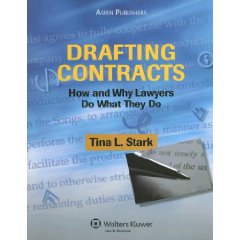No.016 契約書と常緑樹の関係(期間条項)
さて、今回は、一見関係のなさそうな、「契約書」と「常緑樹」について。
私が愛読している書籍 ↓ がありまして、ここに、次のようなフレーズが書かれています。

When drafting contracts with a term, discuss with the client whether the contract should include an evergreen provision. These provisions automatically renew a contract's term. When drafting an evergreen consider the following issues:
1. Does the term automatically renew, unless one party notifies the other that it is terminating the contract?
2. Does the term automatically end, unless a party exercises its option to renew?
3. Does each party have the authority to renew?
4. How long should the renewal period be: the same length of time as the original period or shorter?
(訳してみます)
期間を含む契約書を起草するときは、クライアントとEvergreen(常緑樹)条項を含めるべきかどうか、議論しなければならない。この条項は、契約期間を自動的に更新するものである。このEvergreenを起草するときは、次の問題を考慮すべきである。1. その期間は、一方が他方に解除の通知をしない限り、自動的に更新されるか?
2. その期間は、一方が更新するオプションを行使しなければ、自動的に終了するのか?
3. いずれの契約当事者も、更新する権限を持っているか?
4. 更新する期間はどれくらいか?元の契約期間と同じ長さか、それともそれより短いのか?
Evergreen Provisionという表現はこの書籍で初めて知りました。ずっと緑のままでいる「常緑樹」のように、契約書が永続することをさしているのですね。期間Term条項で、自動更新の設定をします。区切られた期間であれば、契約終了となりますが、半永久的に契約が有効となる場合もあります。
日本国内では、次のような文言をよく見かけます。
本契約の契約期限は、契約日より1年間とし、契約期限の3か月前までに甲乙いずれかより特段の意思表示がないときは、自動的に1年間更新されるものとする。
参考:拙著「これ1冊でわかる契約書の読み方・つくり方」(あさ出版)
この場合、双方から終了の意思表示(口頭・文書等)がなければ、ずっと契約が続くことになります。
しかし、契約前は「永続させたい」と思っていても、契約の履行が始まったら、「早くやめたい」と思うようになるかもしれません。そのとき、どのような権限を持つか、期間自動更新の条項も、重要な役割を果たすかもしれません。
Evergreenの言葉のごとく、双方が緑を維持できるような関係を築きたいものです。
(注) 期限に関して、自動更新条項の規定に基づいて更新しない旨を意思表示したけれども、それは「次の期限まで更新しない」ということで、3か月後等に終了できるわけではないと、トラブルになる事例が見られます。期限の条項とは別に、early terminationの条項を明確に置いておけば、このトラブルを回避できます。
(English)
Now, I will talk about "contract" & "evergreen." They are no relation at a glance.
Here is my favorite book, and it says;
When drafting contracts with a term, discuss with the client whether the contract should include an evergreen provision. These provisions automatically renew a contract's term. When drafting an evergreen consider the following issues:
1. Does the term automatically renew, unless one party notifies the other that it is terminating the contract?
2. Does the term automatically end, unless a party exercises its option to renew?
3. Does each party have the authority to renew?
4. How long should the renewal period be: the same length of time as the original period or shorter?
I didn't know the phrase "Evergreen Provision" before read it. "Evergreen" means that something (here, contract) lasts forever like evergreen trees in forest.
We decide the contract will automatically renew or not in the "Term" provision. Some contracts ends when the expiration date coming, others continue semipermanently.
We can see the term provision like this.
This Agreement ends on December 31, 20xx. It automatically renews for successive 1-year terms, unless either party exercises its option to terminate.
The contract will be effective unless each party declare to terminate and issue some notice to other party.
Even if you want to keep the relationship and keep the contract effective, you may think "We have to terminate it as soon as we can." When you will be put such a situation, what can you do? You have to consider the authority or right of endgame. The provision of "Automatical Renewal" may take an important role.
We want to build the relationship so as to keep the green forest "Evergreen."
